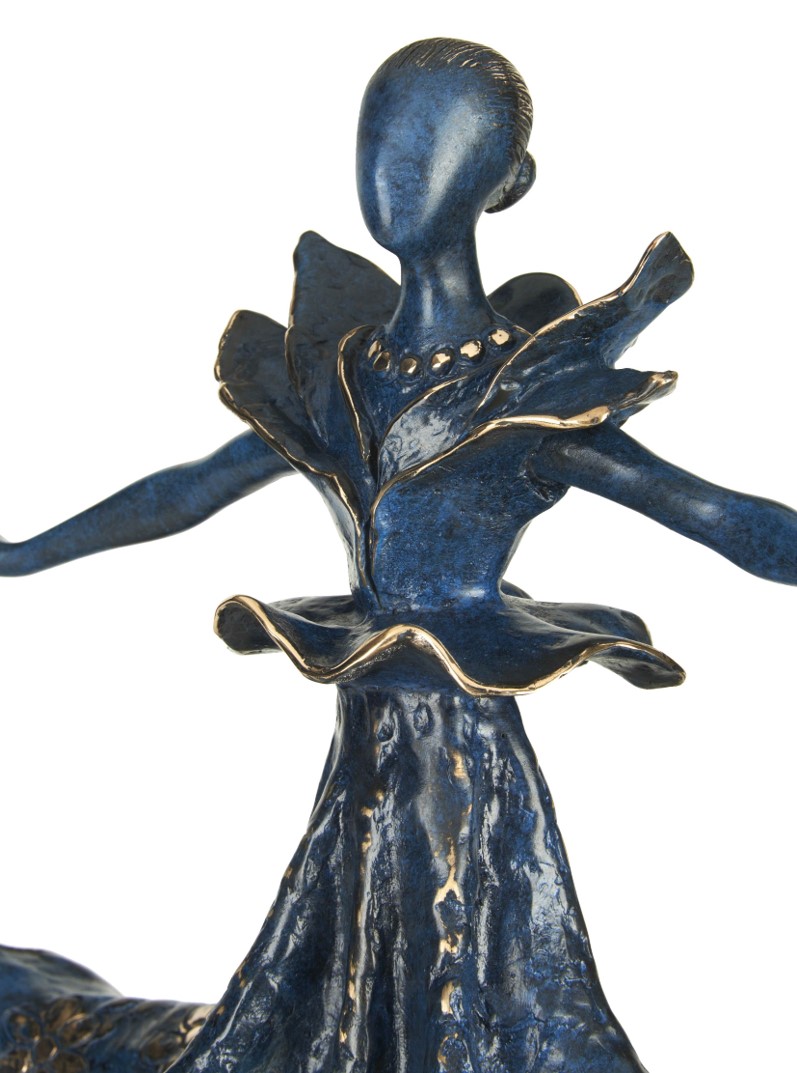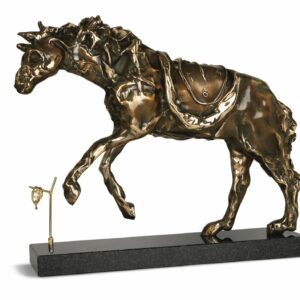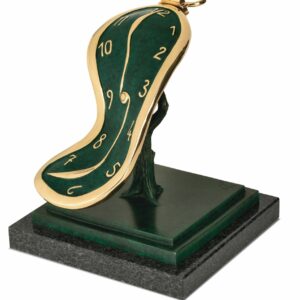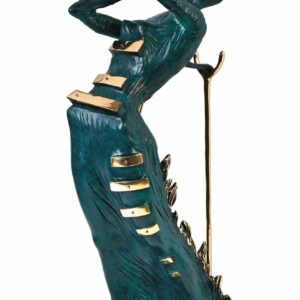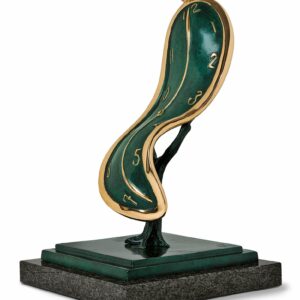Dalí was fascinated with the art of dance and it was of great significance in his life and work.
He was especially attracted to the passion and flamboyance of the flamenco, known for its ability to explore the full range of feelings and emotions. He was an avid admirer of the “flamenco queen” of Spain, “La Chana”, and would often watch her perform, with his pet ocelot in tow.
Elements of flamenco can be seen in this sculpture; the ruffles on the dress, its low neckline, and the hair pulled back in a bun. Dalí seems to capture the sense of movement perfectly. The dancer twirls around in a display of vitality and ecstasy, the layers of her skirt flaring out as she moves; the heaviness of the bronze contrasts with the lightness of the vibrant dancer. The faceless figure, a recurring motif in Dalí’s oeuvre, lures us in with her intense rhythm.
Undoubtedly it was Dalí’s fascination with ballet that influenced much of his art work. His close links with the stage and theatre, meant he collaborated with designers and dressmakers throughout the 1930’s and beyond, designing costumes, contributing to stage sets and writing librettos, such as Bacchanale (1939), and Tristan Fou (1936-1938).
Dalí depicted the Sardana dance in various paintings, the most famous being The Sardana of the Witches (1918) which he painted at a very young age. He was influenced by his father’s love of the Sardana, a traditional folk dance of Catalonia where dancers form a circle and follow choreographed steps, holding hands.
Please contact us here for more information.
Related products
-
Horse Saddled with Time
Salvador Dali -
Dance of Time III
Salvador Dali -
Woman Aflame
Salvador Dali -
Dance of Time I
Salvador Dali


